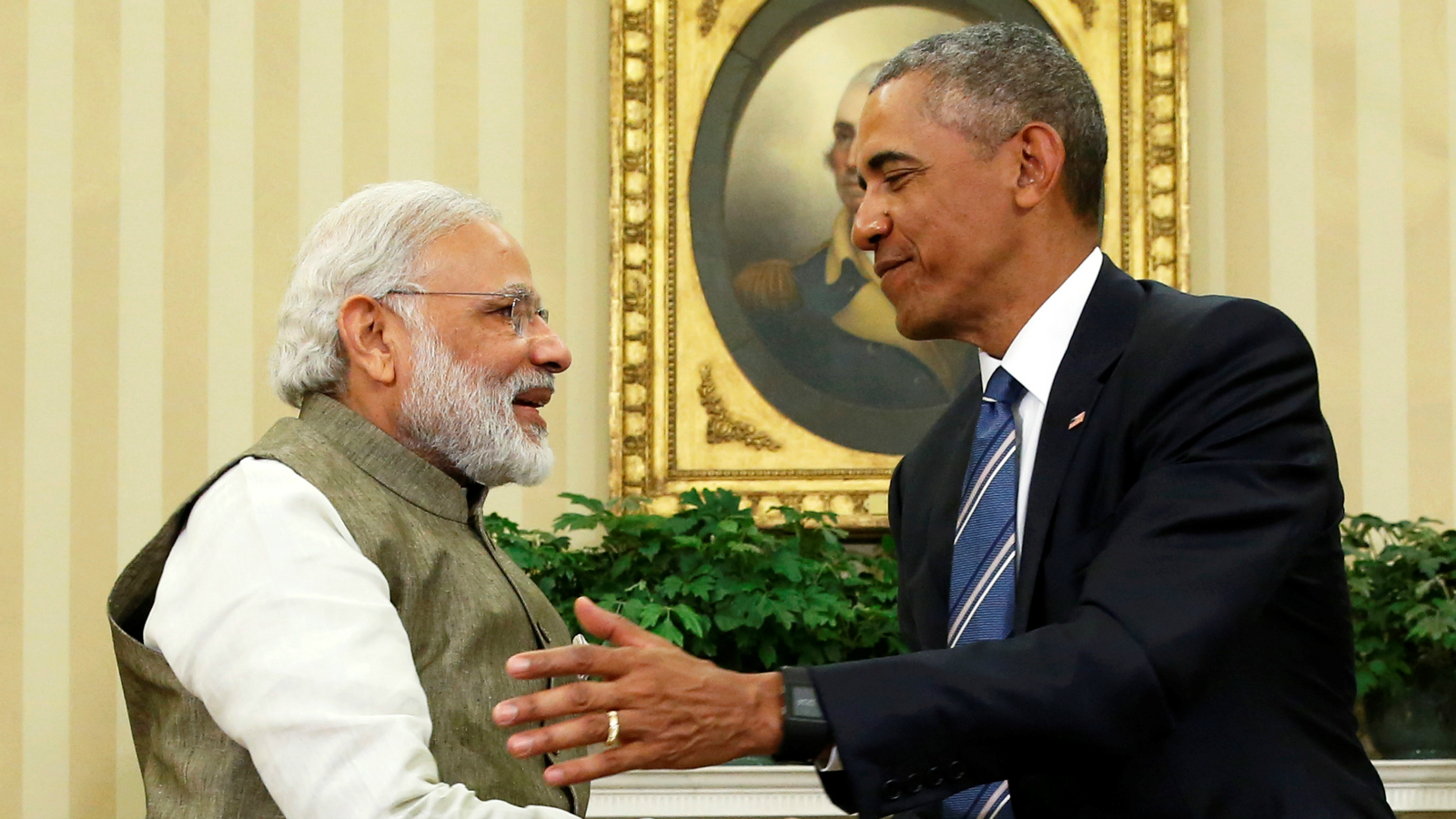Indian Prime Minister Narendra Modi is serious about fighting climate change, and about collaborating with the U.S. to do it, he made clear during an address to the U.S. Congress on Wednesday. He said that “protection of the environment … is central to our shared vision of a just world,” and called for “a lighter carbon footprint and a greater use of renewables.”
On Tuesday, the first day of Modi’s state visit to Washington, D.C., his government and the Obama administration issued a joint statement on U.S.-India cooperation that led with plans for expanding clean energy deployment in India. The most important component is $60 million in clean energy financing. The Indian government will split the costs with U.S. foundations to help small Indian solar startups get off the ground, especially in rural villages that are not on the country’s electrical grid. These subsidies and loan guarantees should help the young companies expand to the point where they can attract far greater international investment — as much as $1.4 billion, the two governments estimate. That additional money will mostly come from the private sector, although some may come from other government sources, such as the U.S. Export-Import bank.
“These off-the-grid companies are small and need funding to scale up,” John Coequyt, the Sierra Club’s director of international climate campaigns, told Grist. “The hope is that it will raise far more than that seed money.”
Boosting India’s renewable sector will help curb the need for expanded coal power by providing electricity to areas in India that current lack it. Modi has emphasized in past speeches that 300 million Indians still don’t have access to electricity. As seriously as India takes climate change, Modi warns, it won’t keep its people in the literal dark. The new financing deal with the U.S. is specifically designed to address that concern.
The two countries also made plans for a $30 million public-private research program on smart grids and storage of renewable energy, and agreed to improve cooperation on wildlife conservation and combating wildlife trafficking.
One part of the announcement that won’t sit well with some environmental activists is that India will buy six nuclear reactors built by Westinghouse, an American firm. But even green groups that oppose the nuclear portion of the deal are pleased overall. Sierra Club Executive Director Michael Brune said in a statement that the agreement will “accelerate the momentum toward a 100 percent clean energy economy” and “help connect families to clean, reliable electricity after generations of being failed by the fossil fuel grid.”
India is the second most populous country in the world, and its enthusiastic participation is crucial to any global effort to limit climate change. It has poverty that needs to be alleviated through economic development and it has large reserves of coal — a potentially lethal combination for the planet.
Before the U.N. climate negotiations in Paris last December, climate hawks were nervous about whether India would cooperate. Efforts to bring the country into a strong deal proved challenging but ultimately successful. India agreed to dramatically increase its renewable energy deployment and to increase its coal use less than previously expected (although still not enough to help the world stay below 2 degrees C of warming).
This represents major progress. In 2014, Modi skipped the U.N. Climate Summit in New York and made peculiar, inscrutable comments to the U.N. General Assembly shortly thereafter suggesting that yoga could help combat climate change. But, as pollution from burning coal and gasoline has turned Delhi and other Indian cities into some of the most polluted in the world, India has started to shift its stances.
This week in D.C., Modi reiterated his commitment to the Paris Agreement, pledging to work on getting his government to ratify it this year, a complex and arduous process. The global community is newly focused on bringing the agreement into effect before next January because Donald Trump has threatened to try to undo the global pact. If at least 55 countries representing at least 55 percent of global emissions have ratified it before a President Trump takes office, then the agreement will go into force and can’t be easily unraveled.
India’s new plans for collaborating with the U.S. won’t just matter in Delhi and D.C. India is the de facto leader of a large bloc of developing nations in climate negotiations, so its latest actions will reverberate around the world.
Correction: This article originally stated that the U.S.’s half of the clean energy finance would come from the government rather than foundations.


